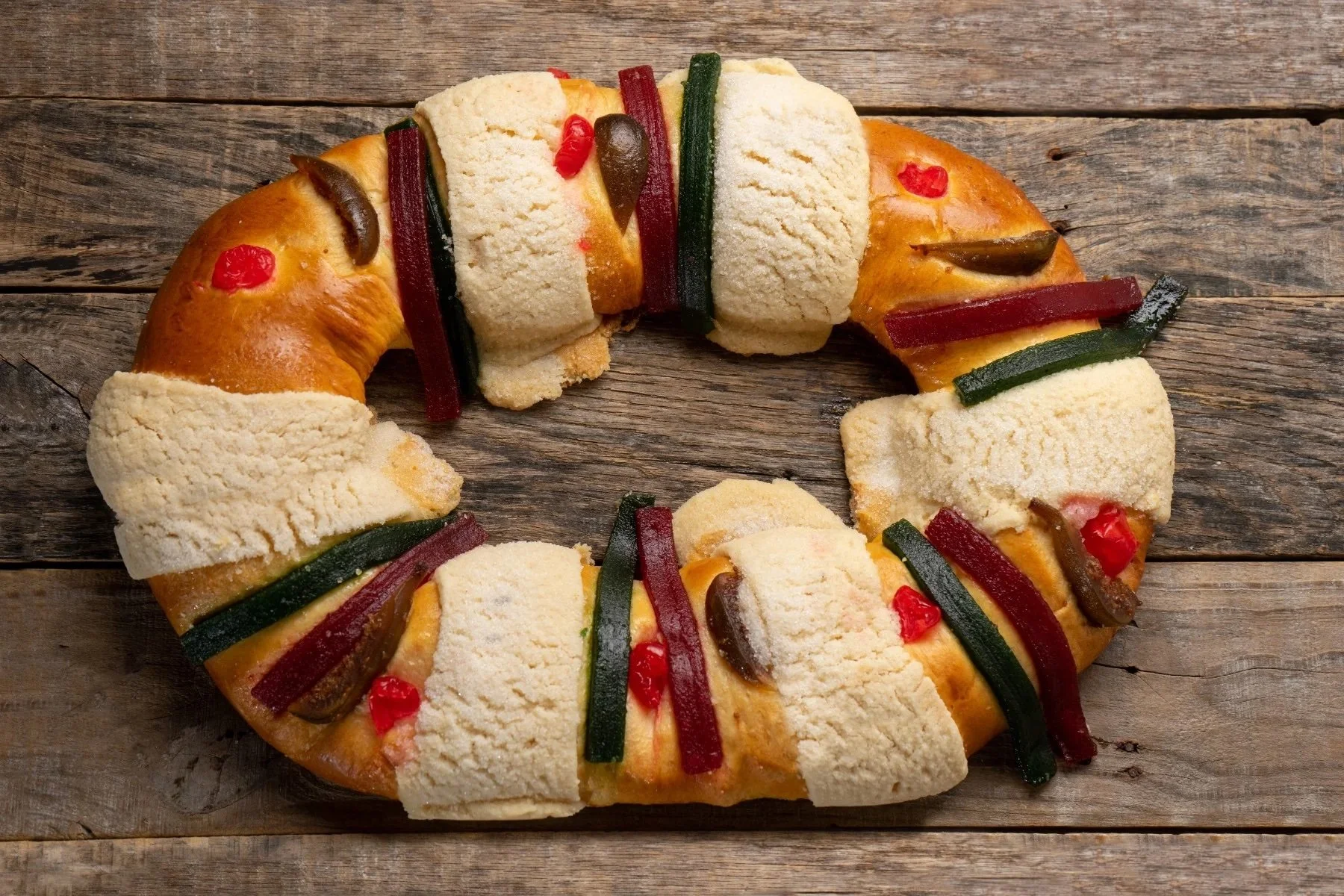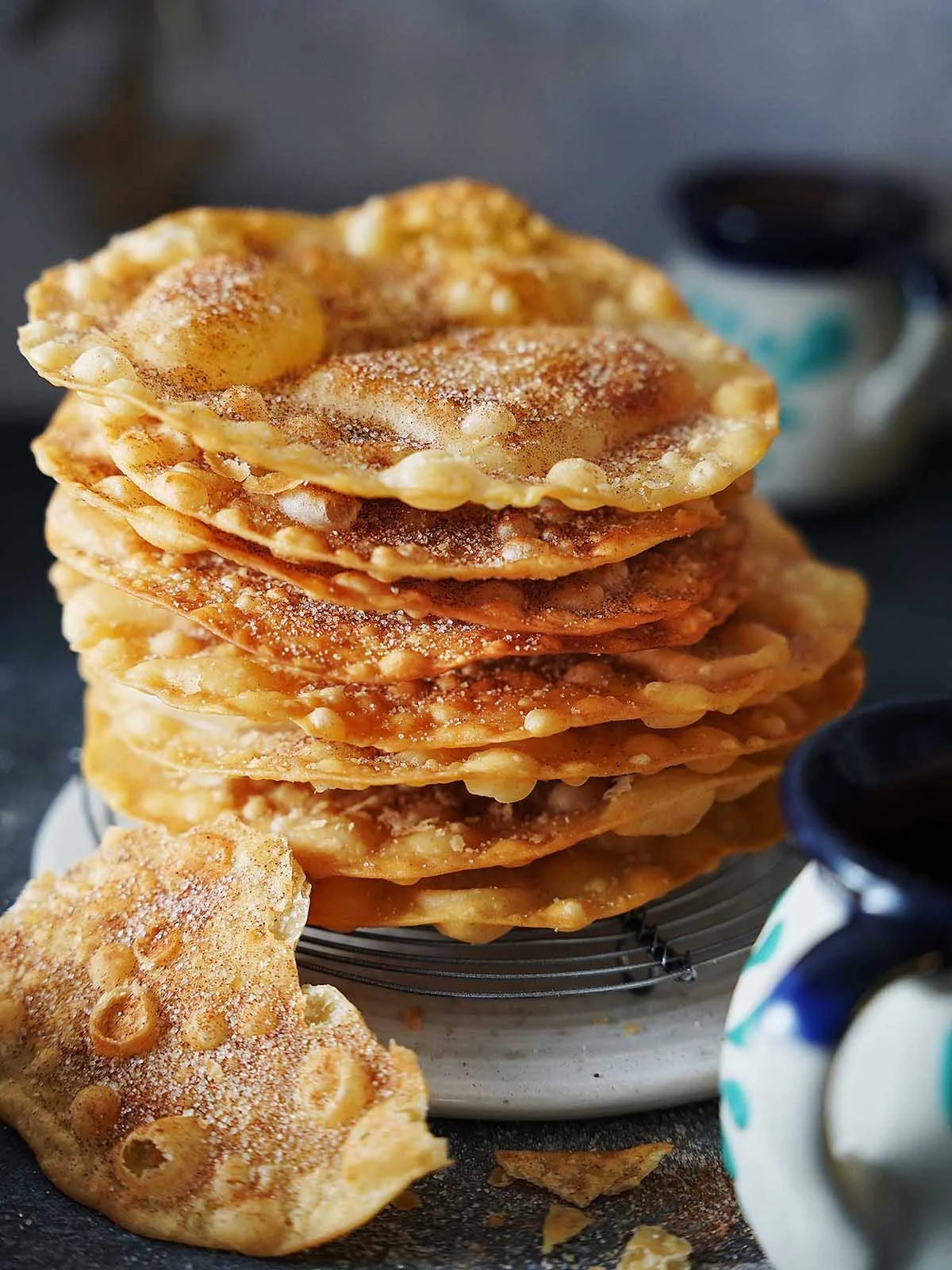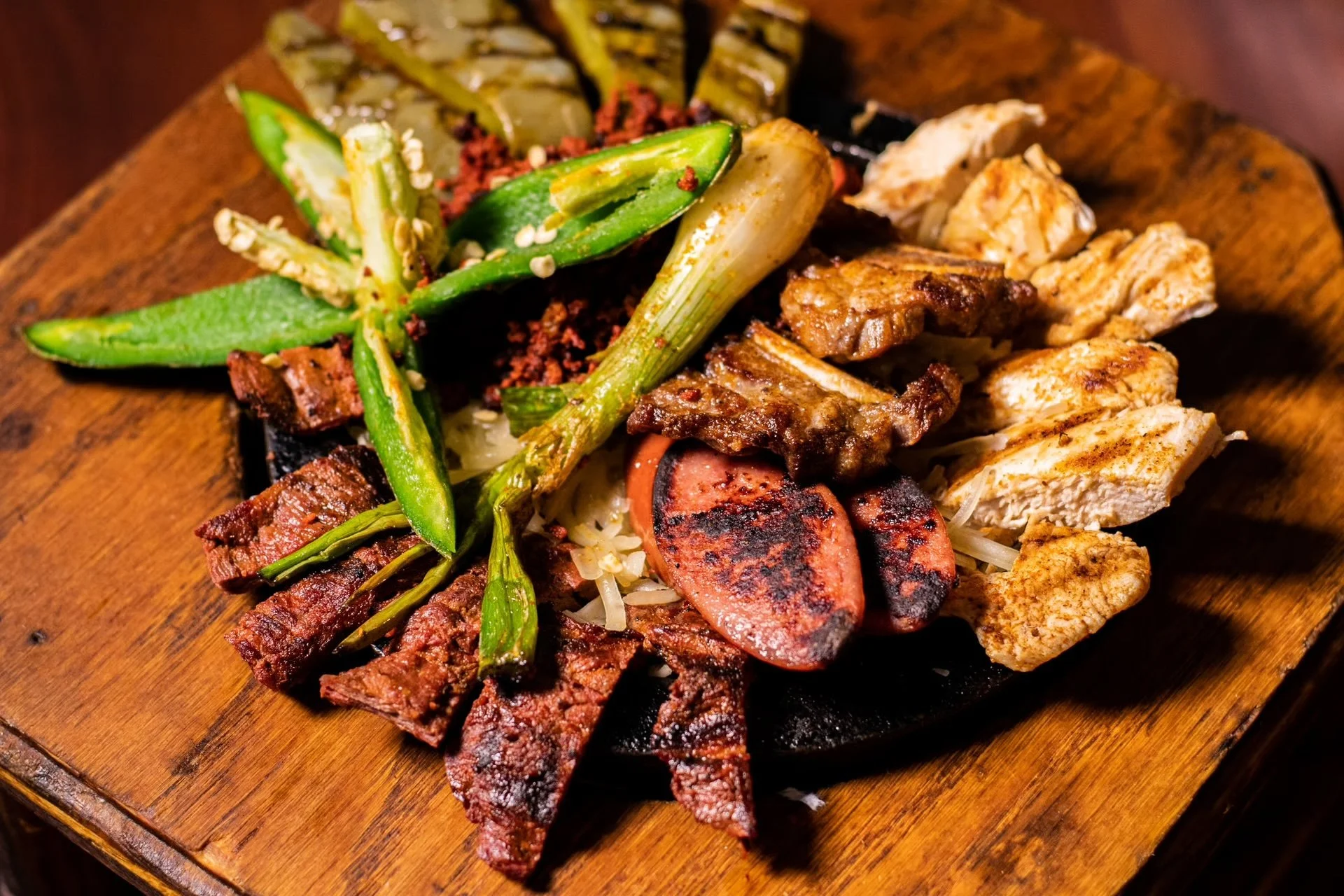Mexican Holiday Foods Guide
This expanded guide adds fresh stories, regional insights, and lesser-known dishes to paint an even richer picture of how Mexicans celebrate Christmas, Día de los Muertos, Independence Day, and the turn of the year through food. Use it as a roadmap for planning menus or simply to understand the cultural threads that bind each bite to history.
Christmas and Las Posadas: A Season of Abundance Revisited
Beyond tamales, pozole, bacalao, romeritos, and ponche, Mexican Christmas tables often feature two show-stopping items that extend the festivities well into January: Rosca de Reyes and Buñuelos.
Rosca de Reyes - The Epiphany Crown
On January 6, families gather to share a sweet, wreath-shaped bread dotted with jewel-like candied fruit. The circular loaf honors the Three Wise Men and symbolizes God's endless love; the candied fruit represents the kings' gifts. Hidden inside are one or more tiny figurines of the infant Jesus. Finding a figurine ensures good luck but also assigns the finder to host a tamale feast on February 2, Día de la Candelaria. Modern panaderías sometimes tuck several babies inside one rosca, guaranteeing multiple hosts and more tamales the following month. The bread's tender, egg-rich crumb is often scented with orange zest and anise, turning the simple act of slicing into a ritual of aroma and suspense.
Rosca de Reyes
Buñuelos - Crispy Disks of Celebration
At posadas and New Year's gatherings, street vendors and home cooks alike fry wafer-thin rounds of dough until blistered and golden, then cloak them in cinnamon sugar or drizzle them with piloncillo syrup. Their satisfying crunch echoes laughter around the table, and some families smash the empty clay plate afterward as a wish-making gesture, ushering good fortune into the year ahead.
Buñuelos
Ensalada de Nochebuena - Christmas Eve's Palette Cleanser
This colorful salad combines roasted beets, oranges, jicama, apples, pomegranate arils, and toasted pepitas on romaine leaves, often dressed with pink-hued crema Mexicana. Bright and refreshing, it balances the heavier meat and masa dishes served throughout the evening.
Tamalada Culture - Keeping Traditions Alive
A tamalada can last 10 to 12 hours, becoming a living classroom where elders teach younger generations how to whip lard into fluffy masa, soak corn husks, season fillings, and tie tamales securely. Just as Frida preserved Mexican identity through her art, today’s Mexican families ensure cultural continuity when elders teach younger generations traditional cooking techniques during holiday tamaladas and celebrations.
Tamalada
Each household's fillings signal regional roots: Northern states favor beef and red chile; Oaxaca steams banana-leaf packets of mole negro; Yucatán wraps cochinita-pibil tamales tinged with achiote. To understand these distinctive regional variations and their cultural significance, explore our comprehensive A Comprehensive Guide to Regional Mexican Cuisine: Northern-Central-Yucatán-Coastal.
From Rosca to Candlemas: The Continuum of Celebration
The rosca's hidden figurine links January 6 to February 2. On Candlemas, hosts dress statuettes of the Christ Child in new finery, carry them to church for a blessing, then serve mountains of tamales with mugs of atole or champurrado. This final feast closes the Christmas cycle that began December 12 with the feast of Our Lady of Guadalupe.
Día de los Muertos: New Layers of Meaning
While pan de muerto, mole negro, calabaza en tacha, sugar skulls, and comforting cups of atole anchor the holiday, many regions fold their own flavors into the remembrance.
Ofrenda Extras
Favorite regional snacks of the departed—perhaps crispy chapulines (grasshoppers) in Oaxaca or charales (tiny dried fish) around Lake Pátzcuaro—appear on the altar.
Miniature bottles of tequila, mezcal, or pulque invite spirits to relax and stay a while.
Salt dishes are set near candles to "season" the journey between worlds, preventing spiritual fatigue.
Tzompantli and Contemporary Art
In Mexico City's main square, monumental public ofrendas showcase sugar-skull mosaics and towering tzompantli-inspired sculptures (rows of stylized skulls) that reinterpret pre-Columbian themes for modern audiences.
Regional Bread Variations
In Puebla, bakers craft pan de muerto shaped like angels or doves. In Michoacán, sweet bread called pan de animales takes the form of alligators, rabbits, or sheep—each animal thought to guide souls safely home.
Independence Day Deep Dive
Independence Day feasts already sparkle with chiles en nogada, pozole, pambazos, tacos, elotes, and tostadas. Additional culinary customs amplify national pride:
Fajitas Patrias and Parrilladas
Outdoor grills sizzle with arrachera (skirt steak) marinated in lime, garlic, and beer. Charcoal smoke mingles with distant fireworks as families chant "¡Viva México!" between bites.
Parrillada
Sweets in Flag Colors
Vendors sell gelatin desserts layered green-white-red, charamuscas (caramel figurines) shaped like Hidalgo or Morelos, and mazapán de cacahuate wrapped in tricolor paper.
Aguas Frescas and Spirits
Large glass vitroleros brim with agua de jamaica, horchata, and lime-cucumber agua fresca. Adults toast with caballitos of blanco tequila or smoky artisanal mezcal while children wave sparklers.
State-Specific Dishes
In Guerrero, green pozole uses pumpkin seeds and epazote for color.
In the Bajío, birria de chivo (goat stew) simmers in red adobo.
Veracruz kitchens prepare pescado a la veracruzana—red-sauced fish studded with olives and capers—to honor the coastal state's role in early independence skirmishes.
New Year's Eve and Beyond: Food as Fortune-Teller
Mexicans greet the new year with playful gastronomic rituals:
Twelve Grapes at Midnight
Each grape swallowed with the clock's chimes earns a wish for the twelve coming months. Markets pre-package sets of seedless grapes to make the sprint easier.
Lentil Superstitions
Some households tuck handfuls of dried lentils into wallets for prosperity, scatter them across the table, or cook hearty lentil soup as the first meal of January 1 to ensure abundance.
Buñuelos and Broken Plates
In Oaxaca, revelers smash the clay bowl in which buñuelos are served, symbolically shattering last year's misfortunes and clearing space for new blessings.
Suitcases and Sweeping
Would-be travelers carry empty luggage around the block just after midnight, believing it will fill with real journeys. Others sweep the house from back to front, pushing out stale energy before the year turns.
Regional Spotlight: Yucatán's Holiday Flavors
Yucatecan Christmas dinners highlight pavo en escabeche oriental, turkey marinated in achiote-spiked vinegar and sour orange juice. Sides include frijol con puerco (pork-bean stew) and tortillas de maíz freshly patted by hand. For Independence Day, cochinita pibil wrapped in banana leaves steams underground in a píib until fork-tender, topped with pickled red onions and habanero salsa.
Regional Spotlight: Northern Desert Celebrations
In Chihuahua and Sonora, Christmas tables might showcase dried-meat machaca burritos at dawn—fuel for final gift wrapping. Instead of rompope, revelers sip sotol or bacanora, spirits distilled from desert succulents. During New Year's Eve, coyotas (shortbread-like cookies filled with piloncillo) accompany the grape-eating ritual.
Holiday Beverages Beyond Ponche Navideño
Rompope
A custard-like eggnog flavored with rum and vanilla, first brewed by Puebla's Santa Clara nuns. Bottled versions now appear in supermarkets, but homemade batches still command respect.
Café de Olla
Coffee simmered with piloncillo, cinnamon, and sometimes clove or orange peel, served in rustic clay mugs that impart a faint earthy aroma—ideal alongside buñuelos or pan de muerto.
Aromas of Anise and Cinnamon
Even simple agua de canela (cinnamon water) or té de anís fill kitchens with scents that signal holiday warmth.
From Kitchen to Community: Markets and Street Scenes
Mercados de Navidad
Temporary stalls sprout outside central markets selling fresh tejocotes, canela sticks, piloncillo cones, and sugar-cane spears essential for ponche. Vendors hawk ready-made masa by the kilo so home cooks can skip nixtamalizing.
Piñatas and Posadas
No posada ends without the ceremonial breaking of a seven-point piñata symbolizing the seven deadly sins. Candy, fruit, and even peanuts tumble out, reinforcing abundance themes woven through every holiday menu.
Preserving Tradition in Digital Times
Recipe videos filmed by abuelas now circulate on social media, guiding dispersed families through complex sauces. Voice searches such as "Alexa, how long to cook tamales?" or "Hey Google, ponche navideño ingredients" spike in December. Bloggers translate ancestral techniques into stove-top shortcuts while still urging respect for slow cooking when time allows.
Practical Tips for Home Cooks
Order fresh walnuts early for chiles en nogada; peeling is tedious but crucial for a snow-white sauce.
When making buñuelos, rest the dough so gluten relaxes; disks will stretch paper-thin without tearing. To master this and other traditional Mexican cooking methods, discover our detailed guide The Ultimate Guide to Traditional Mexican Cooking Tools: History, Uses, and Care.
Freeze extra tamales uncooked; steam straight from frozen for a quick weeknight meal long after festivities fade.
Leftover ponche syrup doubles as pancake topping or cocktail base—just add sparkling water or mezcal.
Conclusion: A Tapestry Woven in Flavor
With the addition of Rosca de Reyes suspense, Candlemas tamale finales, Epiphany breads, New Year's fortune foods, and regional nuances from coast to desert, the Mexican holiday calendar emerges as an unbroken chain of culinary celebration stretching from early December into February and beyond. Each event layers symbolic foods onto the one before, ensuring that joy, remembrance, and national pride stay fresh on the palate. By embracing these traditions—whether through a sprawling tamalada or a quiet cup of café de olla—you carry forward a living heritage that speaks in aromas, textures, and the unspoken language of shared meals.





